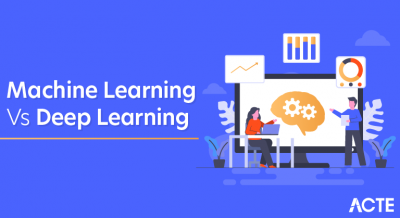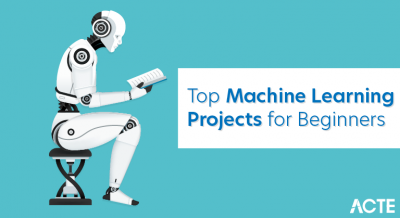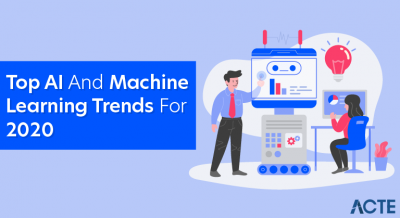
- Introduction to Machine Learning
- What is Machine Learning?
- The Different Types of Machine Learning
- Key Concepts in Machine Learning
- Popular Machine Learning Algorithms
- Tools and Frameworks for Machine Learning
- Challenges in Machine Learning
- Conclusion
Machine learning (ML) is a pivotal aspect of artificial intelligence (AI) that allows computers to learn from data and improve over time without direct programming. It has revolutionized industries by enabling systems to make predictions, automate tasks, and uncover insights from complex data sets. ML works by identifying patterns in data and using these patterns to make informed decisions or predictions. There are three main types of Data Science Course Training supervised learning, where models are trained on labeled data; unsupervised learning, which works with unlabeled data to find hidden patterns; and reinforcement learning, where agents learn through trial and error to maximize rewards. Popular tools for implementing ML models include frameworks like TensorFlow, PyTorch, and scikit-learn. As ML technology evolves, understanding ML becomes essential for staying ahead in fields such as data science, automation, and artificial intelligence development, making it a valuable skill for the future.
Introduction to Machine Learning
Machine learning (ML) has emerged as a transformative ML technology across various industries, including healthcare, finance, e-commerce, and entertainment. As a subset of artificial intelligence (AI), ML enables systems to learn from data, improving performance over time without being explicitly programmed. By automatically analyzing large datasets, machine learning algorithms can identify patterns, make predictions, and provide actionable insights that would be difficult or SQL Intersec for humans to uncover manually. One of the key benefits of machine learning is its ability to automate tasks traditionally requiring human intervention, such as customer service, fraud detection, or predictive maintenance. ML models are trained using historical data, allowing them to recognize trends and make informed decisions. This capability is particularly valuable in industries where timely, data-driven decision-making is critical, such as in healthcare for diagnosing diseases or in finance for assessing investment risks. Moreover, machine learning has paved the way for more personalized experiences in e-commerce and entertainment, where systems predict consumer preferences and suggest relevant products or content. By continually learning and adapting, ML systems improve their accuracy and efficiency, making them indispensable tools for modern businesses. As ML technology continues to evolve, its potential to drive innovation and solve complex challenges grows, making it essential for the future of many industries.
Master Data Science skills by enrolling in this Data Science Online Course today.
What is Machine Learning?
At its core, machine learning (ML) is about using algorithms to analyze data, learn from it, and make predictions or decisions autonomously, without needing explicit human input. The more data a machine learning system processes, the better its performance becomes, similar to how a child learns through experience and feedback. As the system is exposed to more examples, it refines its understanding, improving its ability to make accurate predictions. In machine learning, Round off Formula in Excel process is known as “training” a model. During training, the system is fed large amounts of data, and it identifies patterns or structures within the data. These patterns allow the system to recognize relationships and trends, which can be applied to make predictions in future scenarios. For example, a model trained on historical data can predict future trends, detect anomalies, or classify data points. The ultimate goal of machine learning is to enable systems to use past experiences to make better decisions or predictions moving forward. Over time, as the system is exposed to more data and continues to learn, it becomes increasingly accurate, helping organizations and individuals make more informed, data-driven choices.
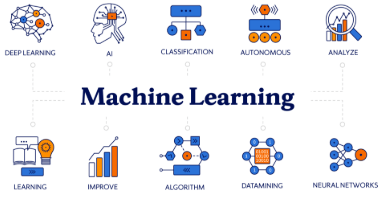
The Different Types of Machine Learning
Machine learning can be categorized into several types, each with its approach to learning from data. Let’s explore the three primary types of machine learning: supervised, unsupervised, and reinforcement.
- Supervised Learning: Supervised learning is the most common type of machine learning. In supervised learning, the algorithm is trained on labeled data, meaning the input data is paired with the correct output. The goal is to learn a mapping from inputs to outputs so that when the model encounters new, unseen data, it can make accurate predictions.
- Unsupervised Learning: In unsupervised learning, the algorithm is trained on data without labels or predefined outcomes. Data Extraction Tools aims to identify underlying patterns or structures in the data. This type of learning is often used for clustering and association tasks.
- Reinforcement Learning: Reinforcement learning is inspired by behavioral psychology, where an agent learns to make decisions by receiving feedback from the environment. The model learns through trial and error, taking actions that maximize cumulative rewards over time.
- Algorithms: An algorithm is a set of instructions a machine follows to solve a problem or complete a task. In machine learning, algorithms define the learning process, enabling the system to learn from data.
- Features and Labels: Features are the individual measurable properties or characteristics of the data. Labels are the target variable the machine learning algorithm tries to predict or classify.
- Training and Testing Data: Machine learning models are typically trained on a dataset and then tested on a separate one to evaluate performance. Data Science Course Training data is used to “teach” the model, while the testing data helps assess its accuracy.
- Model Evaluation: Model evaluation is the process of assessing the model’s performance after training. Standard metrics used in evaluating models include accuracy, precision, recall, F1 score, and mean squared error (MSE).
- Decision Trees: A decision tree is a flowchart-like structure where each internal node represents a feature, and each branch represents a decision rule. The leaves of the tree represent the final predictions.
- Support Vector Machines (SVM):SVM is a supervised learning algorithm used for classification and regression tasks. Excel Sheet Protection works by finding the hyperplane that best separates data into different classes.
- Neural Networks: Neural networks are a series of algorithms designed to recognize patterns by interpreting sensory data through layers of nodes. Deep learning, healthcare , a subfield of machine learning, is based on artificial intelligence with many layers.
- k-Nearest Neighbors (k-NN): k-NN is a simple algorithm used for classification tasks. It works by classifying data points based on the majority class of their nearest neighbors.
- TensorFlow: An open-source framework for building and training machine learning models widely used for deep learning tasks.
- Keras: A high-level neural networks API that runs on top of TensorFlow and is designed for fast prototyping.
- PyTorch: A flexible and efficient deep learning library for research and production environments.
- Overfitting and Underfitting: While machine learning is a powerful tool, several challenges must be addressed to make the most out of it. Overfitting happens when a model is too complex, learning the underlying patterns and the noise in the data. This makes the model perform poorly on unseen data. Underfitting occurs when the model is too simple and fails to capture the underlying patterns in the data.
- Data Quality and Preprocessing: The quality of data is crucial for building effective machine-learning models. Poor data can lead to Coding Required for Data Science predictions. Preprocessing steps, such as data cleaning, feature scaling, and handling missing values, are essential before training models.
- Model Interpretability: Interpreting complex models and intense learning models can be challenging. Lack of interpretability may limit trust in AI systems, especially in critical areas like healthcare or finance.
Enhance your knowledge in Data Science. Join this Data Science Online Course now.
Key Concepts in Machine Learning
Before diving deeper into algorithms and tools, it’s essential to understand some key concepts in machine learning.
Popular Machine Learning Algorithms
There are numerous machine learning algorithms, each suited for specific tasks. Let’s take a look at some popular ones.
Want to lead in Data Science? Enroll in ACTE’s Data Science Master Program Training Course and start your journey today!
Tools and Frameworks for Machine Learning
Various tools and frameworks are available for implementing machine learning models. These tools make building, training, and deploying ML models easier. Python Libraries (TensorFlow, Keras, PyTorch)
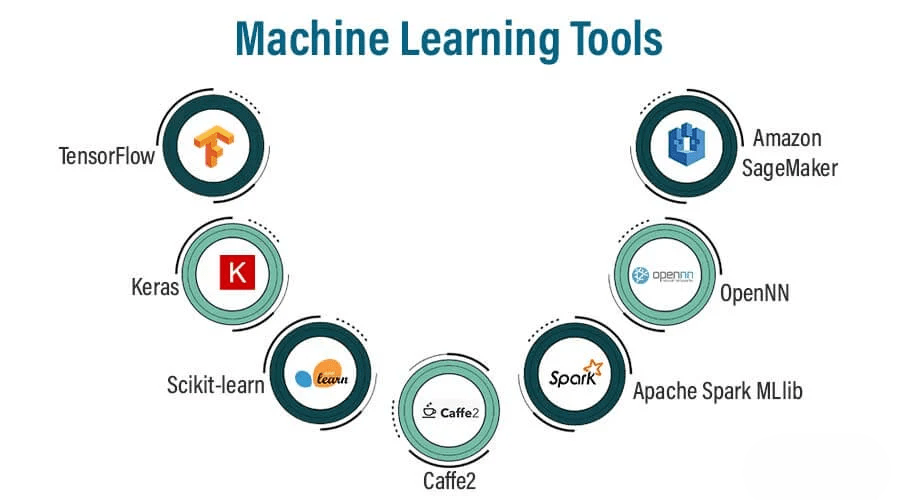
R and ML in R
R is another popular programming language for Data vs Information and machine learning. It has various libraries, such as caret and randomForest, that provide a wide range of machine-learning algorithms. Cloud Platforms (Google Cloud AI, AWS Machine Learning) Cloud-based platforms like Google Cloud AI and AWS Machine Learning provide tools and infrastructure to build and deploy ML models at scale. Automated ML technology (Google AutoML, H2O.ai) For non-experts, automated machine learning (AutoML) tools like Google AutoML and H2O.ai can simplify the process of training models without requiring in-depth knowledge of algorithms and coding.
Preparing for a job interview? Explore our blog on Data Science Interview Questions and Answers!
Challenges in Machine Learning
Conclusion
Machine learning is a dynamic and rapidly advancing field reshaping industries and daily life. These techniques enable breakthroughs across various sectors, from supervised learning to reinforcement learning. Despite challenges like data quality and model interpretability, the future of machine learning is promising, with healthcare continuous advancements in algorithms and tools. Whether you’re a data scientist, developer, or just someone interested in artificial intelligence, understanding machine learning offers endless opportunities. With the proper knowledge and resources, you can apply machine learning to tackle complex problems and foster innovation. As the field grows, mastering Data Science Course Training allows you to be part of a transformative force impacting the globe. The potential for solving real-world challenges is immense, making it an exciting area to explore and contribute to.


